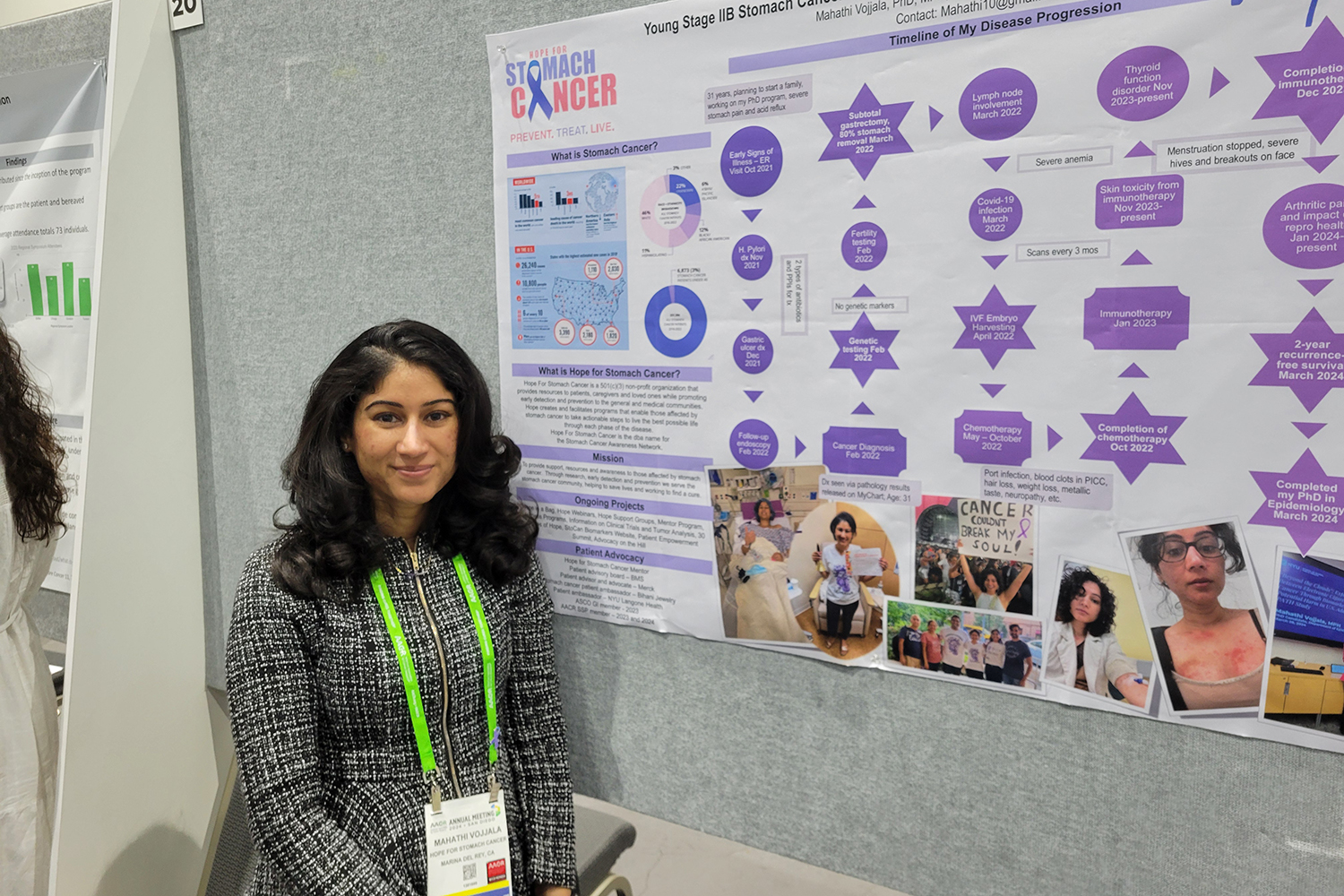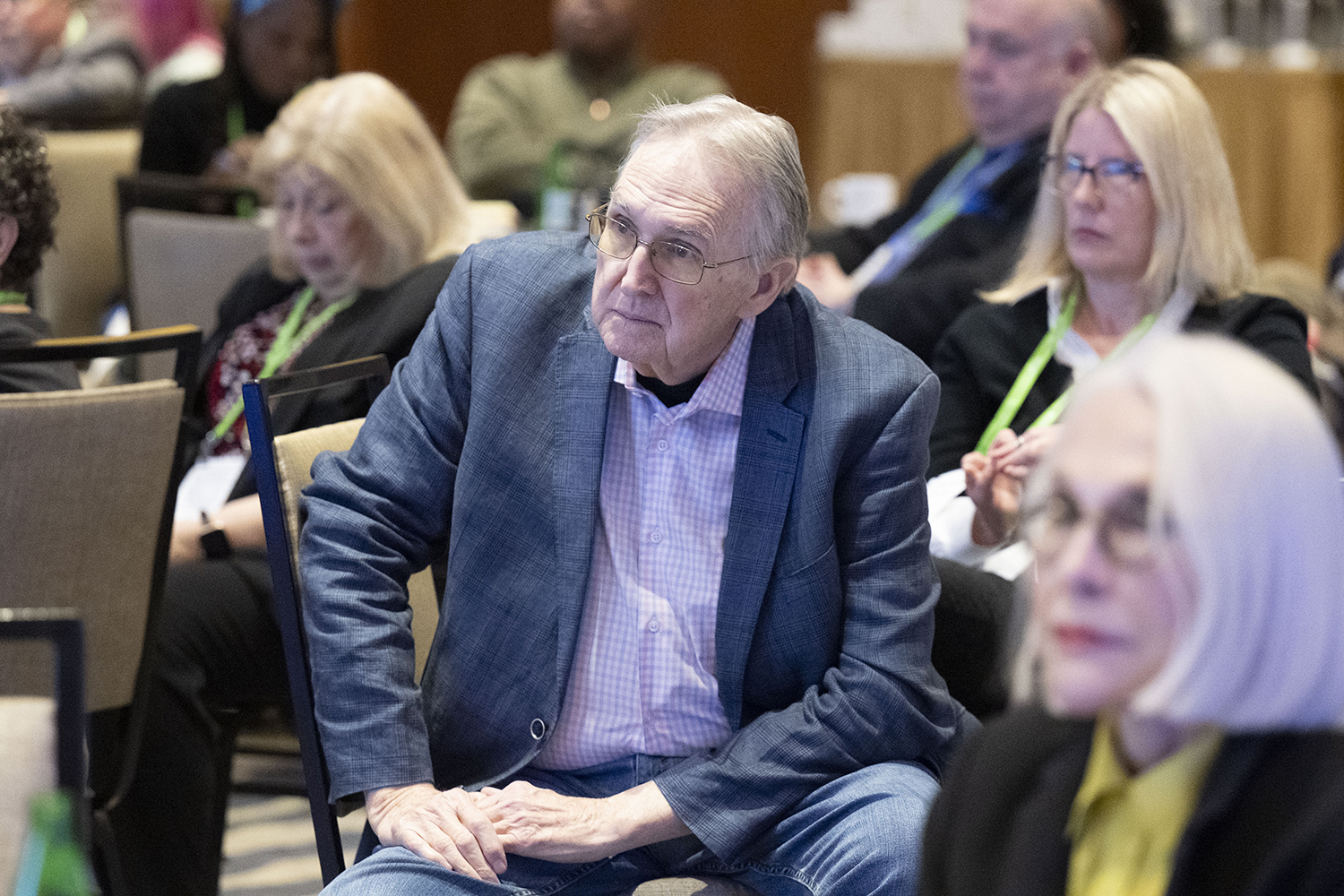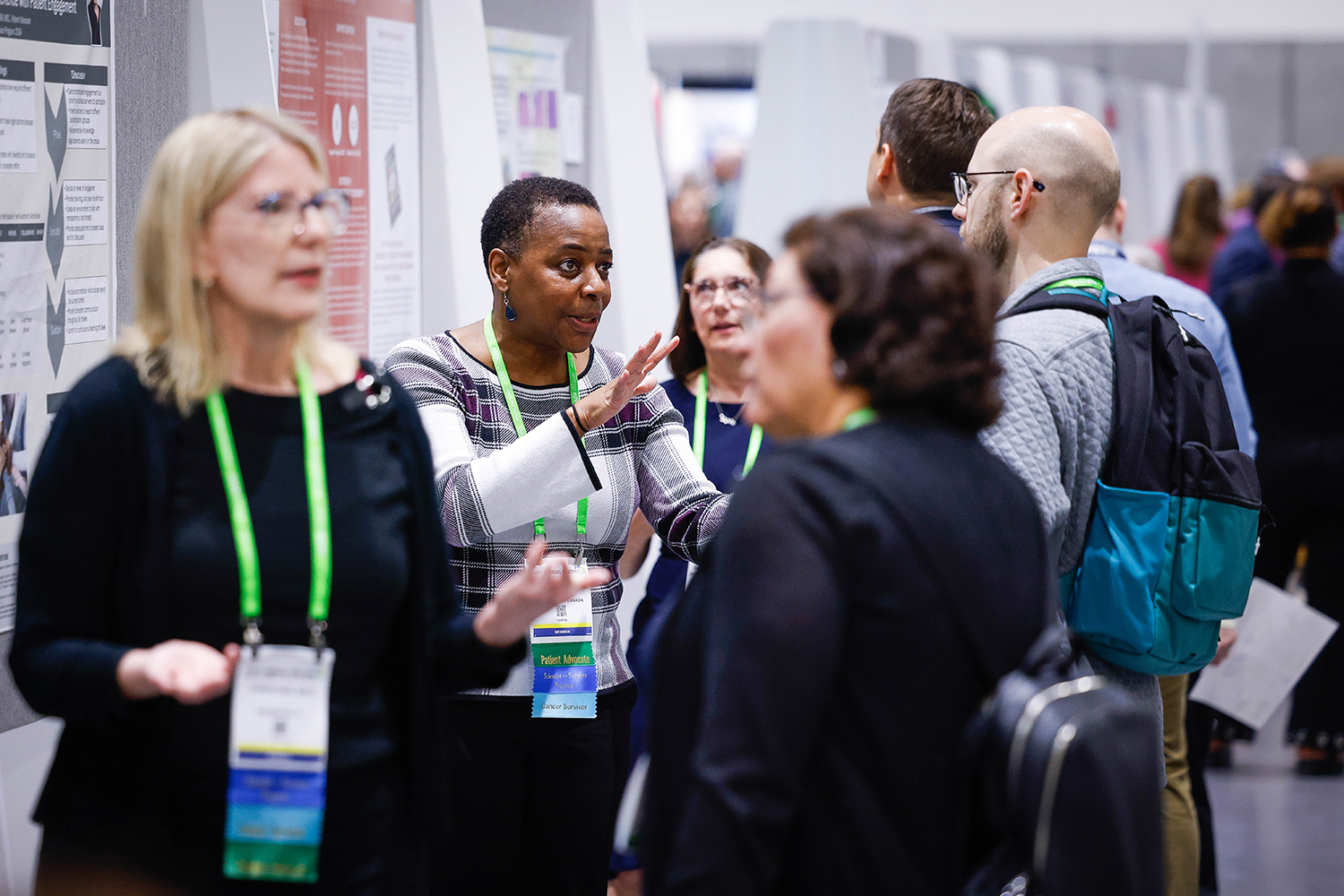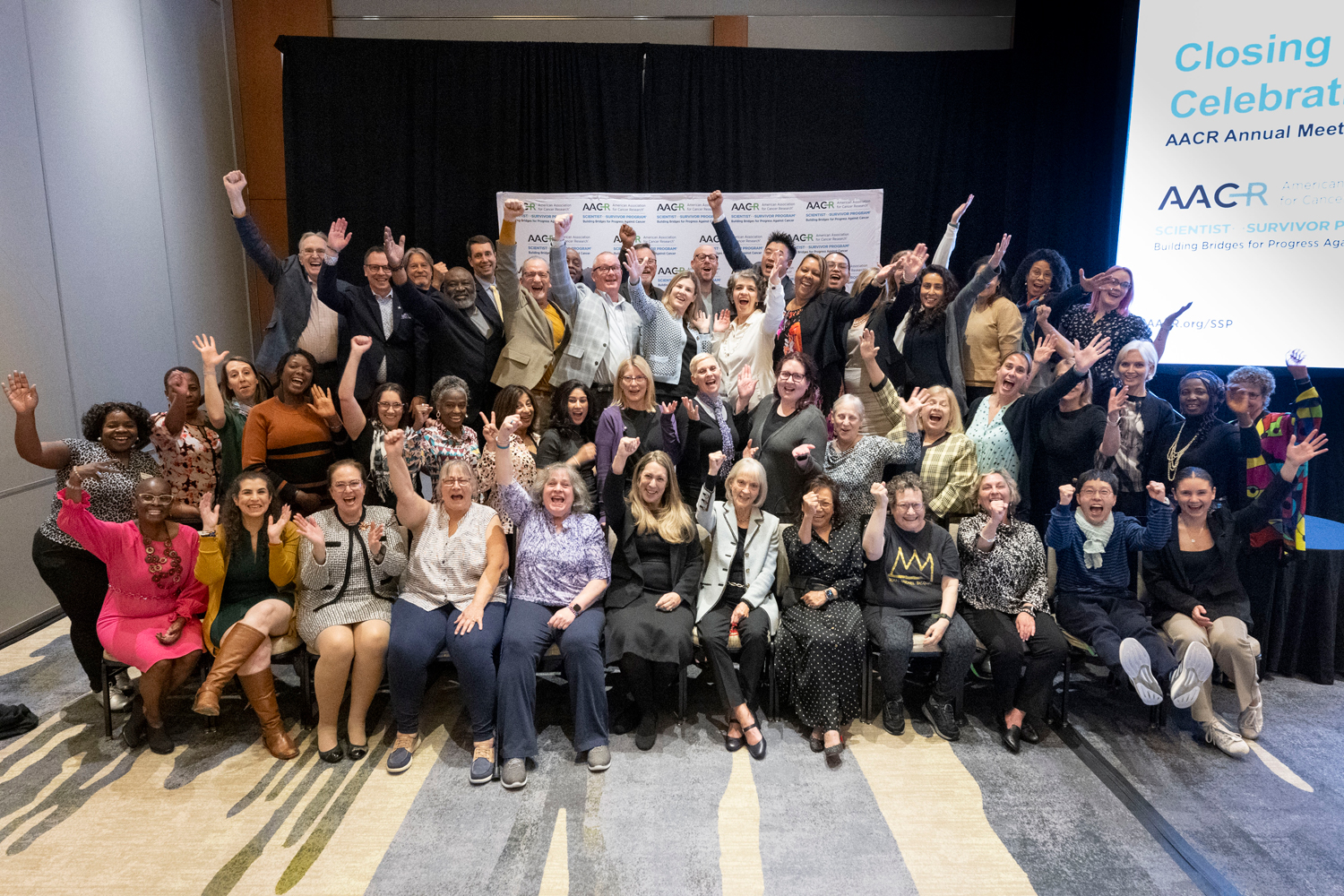PATIENT ADVOCATES SEEKING to learn more about recent advances in cancer research and have their voices heard are increasingly finding their way to major medical conferences, such as the American Association for Cancer Research (AACR) Annual Meeting 2024, held April 5 to 10 in San Diego. (The AACR also publishes Cancer Today.) But with tens of thousands of participants and enormous convention centers, knowing where to go and what to do can be a challenge. Bridging the gap between advocates and the researchers and science at the heart of the meeting is the AACR’s Scientist↔Survivor Program.
The Scientist↔Survivor Program, familiarly called SSP, brings cancer survivors and patient advocates together with scientists and doctors to learn about breaking research and to engage with the AACR Annual Meeting. Participants attend educational sessions, go to conference programs, work together on presentations and even present their own posters at the Annual Meeting exhibit hall. The AACR Annual Meeting 2024 was the 26th year of the program and included 45 advocates hailing from five countries, 18 states and a U.S. territory working with more than 20 scientists.
“It’s not just the sessions that we have, but it’s also all the other advocates that we meet throughout. We’re learning from other people, we’re learning about other cancers,” says Mahathi Vojjala, 33, an SSP participant from Rahway, New Jersey. “I’m learning so much in terms of communication, in terms of the questions they’re asking, in terms of the agency they are taking. … It’s such a wonderful experience.”
Vojjala was presenting a poster about her experience being diagnosed with stomach cancer in February 2022. Just 31 at the time, she says she wasn’t satisfied with the standard care offered to her—surgery and chemotherapy—and advocated for herself to get additional treatment. “I need to live a long life. I have a lot to do in my life. We need to do more,” Vojjala told her doctors.

SSP participant Mahathi Vojjala presents her poster on having stomach cancer as a young adult. Photo by Eric Fitzsimmons
She brought studies to her doctor showing the efficacy of immunotherapy in stomach cancer, and though it hasn’t been approved for her stage of cancer, her cancer center was able to get permission for her care.
Vojjala’s path to SSP went through Hope for Stomach Cancer, an organization she turned to during treatment. “When I was first diagnosed, I joined these support groups and these webinars and I was able to access information,” Vojjala says. She now serves as a mentor at the organization for others newly diagnosed with the disease, and she will return with the knowledge and insight she gained at the meeting.
Getting information home is a motivating factor for many of the participants, including Bill Winkler, an 82-year-old advocate from Detroit, who helps educate patients at cancer centers through the Karmanos Cancer Institute. His work there began after his daughter was diagnosed with leukemia at age 40, just six months after his wife died of lung cancer in 2010. “We took her to Karmanos, they saved her life,” Winkler says. “This is me giving back.”
Winkler goes to Karmanos cancer centers in Michigan and Ohio to learn what information patients would like and to present it in a way that is accessible. “People that are asking me questions in the audience are people that are fearful, anxious, concerned, scared, and those are all the issues that I want to address,” Winkler says.

Bill Winkler listens during an SSP session at the AACR Annual Meeting 2024. Photo by © AACR/Phil McCarten 2024
He says people can be paralyzed by that fear, which keeps them from taking steps to protect their health. His goal is to fight fear with information and give people tools to meaningfully discuss their care with their doctors.
Winkler has had a lifelong interest in science and technology, so he was pleased to find that SSP was tackling artificial intelligence, or AI, a subject of growing interest in health care and research, but one that isn’t well understood by most people.
“We’re talking to people just like us, who have cancer, are in treatment. They’re going to ask us a question about AI. ‘How is this going to affect the medication that I’m on? Is it going to provide new drugs for me? For my disease?’ And we don’t have any answers,” Winkler says.
The interaction in SSP, like the arrow prominently featured in the title, runs both ways, and as much as advocates seek to bring information from the program home, it’s also a chance to bring their concerns to researchers.
Clare Cruickshank, 55, has been involved with several organizations around her home in Hamilton, Ontario, including Ontario Health, CanRehab Team and the Canadian Cancer Society, and has seen both the opportunities for patients to increase their involvement with providers and researchers and the barriers that they face. She used her poster to outline ways that issues such as lack of trust, poor communication and lack of diversity in the organization can be stumbling blocks for people who would like to get involved.
“You look at an organization and see there is no diversity there, do you want to be the first Black person there? Not always,” Cruickshank says.

Clare Cruickshank (center) speaks to an attendee at the Patient Advocacy Poster Session during the AACR Annual Meeting 2024. Photo by © AACR/Meg McLaughlin 2024
Vivian Simbul-Sim, 66, has become more active in advocacy since she was diagnosed with breast cancer in 2011. Starting with fundraisers and working as a patient adviser at her local cancer center in Toronto, she moved on to working with the province of Ontario and eventually national organizations, including the Canadian Cancer Care Alliance, before arriving at the AACR Annual Meeting. For her the experience was invaluable, and she was already making plans to discuss her findings back home.
“I got to meet very passionate people, both scientists and patients,” Simbul-Sim says. “[It’s a] great thing to bring back home and to the other organizations I’m with, for the patients to continue to have hope. I’d encourage other people to take part in this program.”
Cancer Today magazine is free to cancer patients, survivors and caregivers who live in the U.S. Subscribe here to receive four issues per year.





